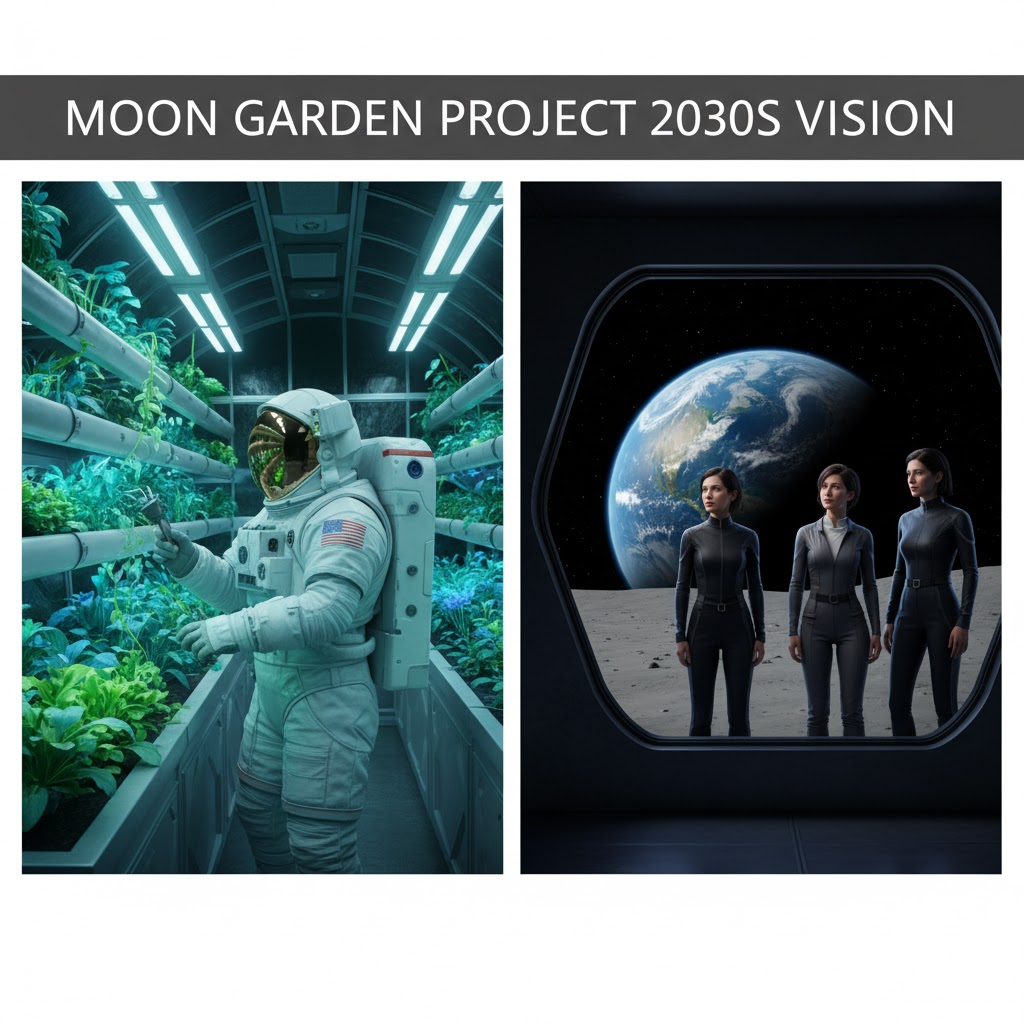Moon Garden & Biosphere: Raising Plants on the Lunar Surface
Introduction: Where Life Blooms on the Moon
Imagine walking through a glowing greenhouse beneath a glass dome on the Moon, surrounded by lettuce, flowers, and miniature trees — each thriving under artificial sunlight.
Welcome to lunar biosphere tourism, the next evolution of eco-travel where science, sustainability, and wonder converge.
These self-contained lunar gardens aren’t just for survival — they’re becoming living destinations for future travelers who want to see life flourish beyond Earth.
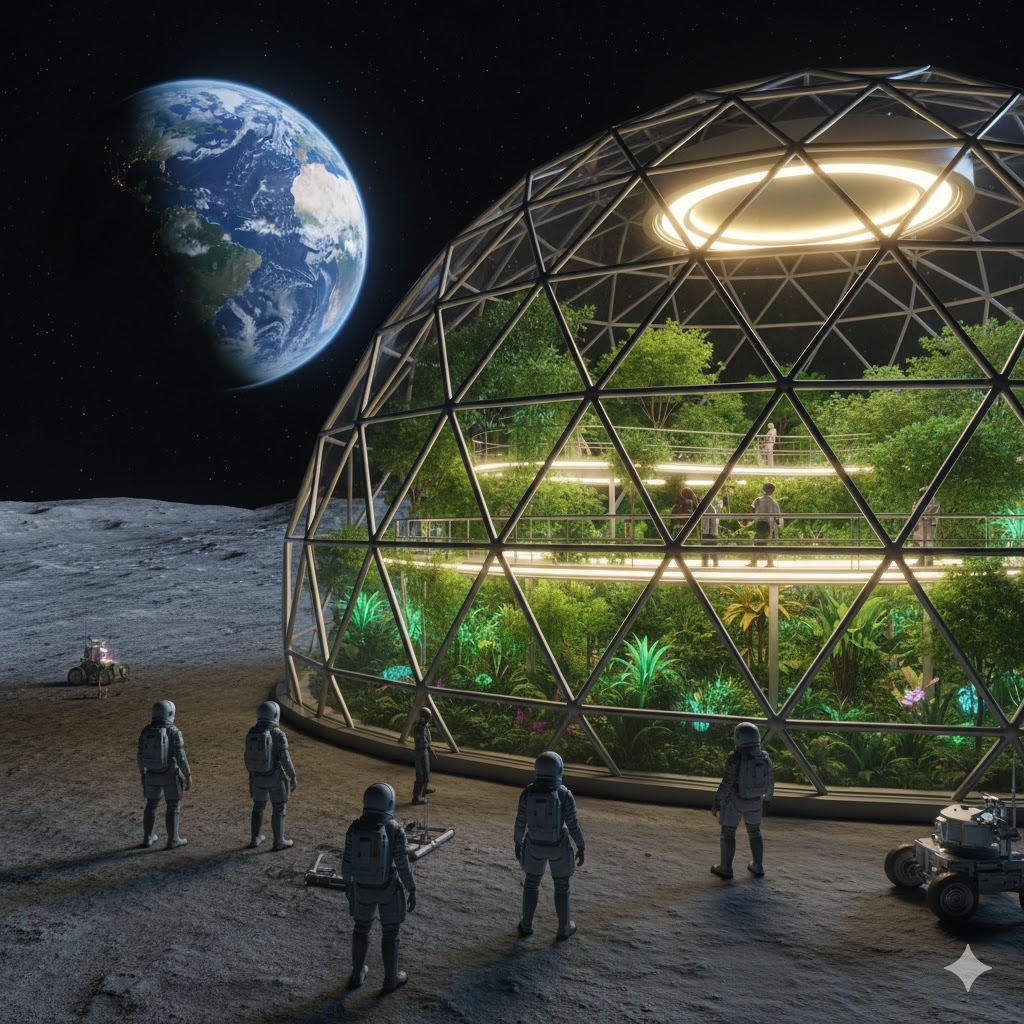
1. What Is a Lunar Biosphere?
A lunar biosphere is a self-sustaining habitat designed to support plants, humans, and microorganisms on the Moon.
It mimics Earth’s ecosystem — air recycling, water condensation, and photosynthesis — inside a sealed dome.
The concept emerged from experiments like Biosphere 2 and NASA’s Veggie Lab, showing that plants can thrive in controlled environments even beyond our planet.
In the 2030s, these biospheres could become the first eco-tourism attractions on the Moon — offering visitors a rare sight: green life surrounded by infinite grey.
Source 1: Learn more about NASA’s Lunar Surface Sustainability Initiative.
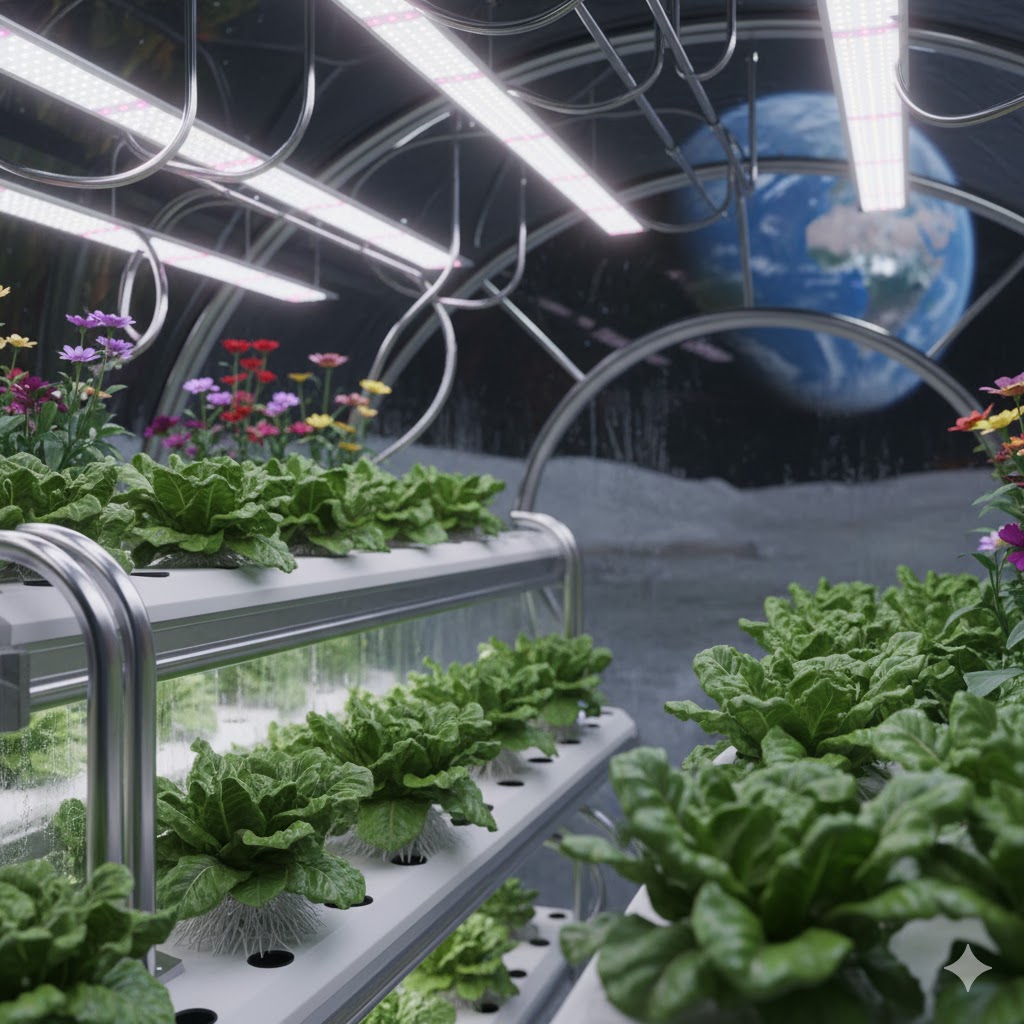
2. The Science Behind Lunar Gardening
Growing plants in space is complex. The Moon’s low gravity (1/6th of Earth), lack of atmosphere, and radiation make natural farming impossible.
So engineers are developing artificial photosynthesis systems and radiation-shielded domes that recreate Earth’s environment.
Key technologies include:
- Hydroponic and aeroponic growth chambers using minimal water
- LED solar simulators for plant photosynthesis
- AI-controlled nutrient cycles
- Recycled oxygen from photosynthetic processes
Each advancement moves lunar biosphere tourism closer to reality — allowing visitors to witness living ecosystems in outer space.
Must See: Similar innovation themes appear in Lunar Winery Tourism: Could Wine Taste Better in Low Gravity?.
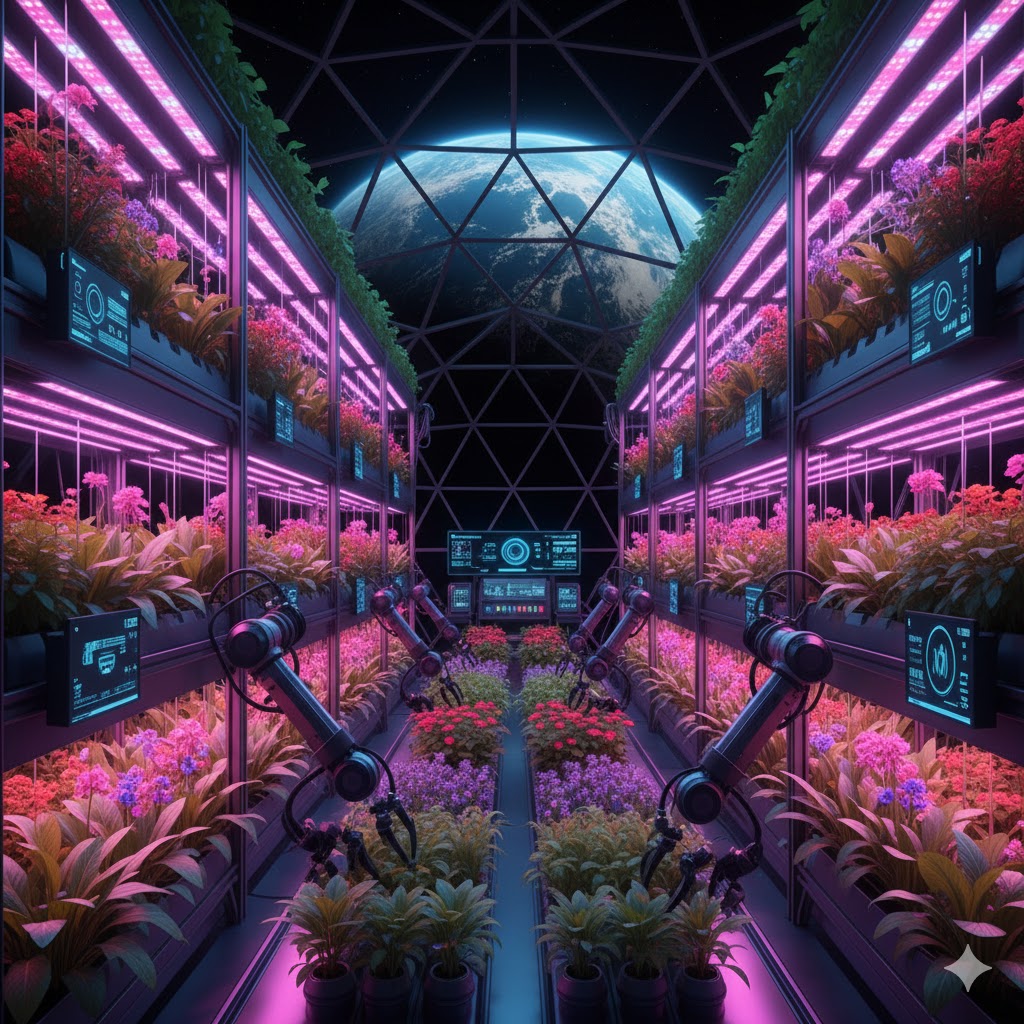
3. The Birth of the Moon Garden Project
The European Space Agency (ESA) and Japan’s JAXA are currently designing small lunar greenhouses for the late 2020s.
These prototypes will test plant growth using Moon regolith simulants and closed-loop life-support systems.
Tourists visiting future Moon bases may get a chance to plant seeds, observe growth experiments, and even taste lunar-grown vegetables — an unforgettable symbol of human resilience.
Source 2: ESA’s Moon Village concept already integrates agricultural domes into its architecture.
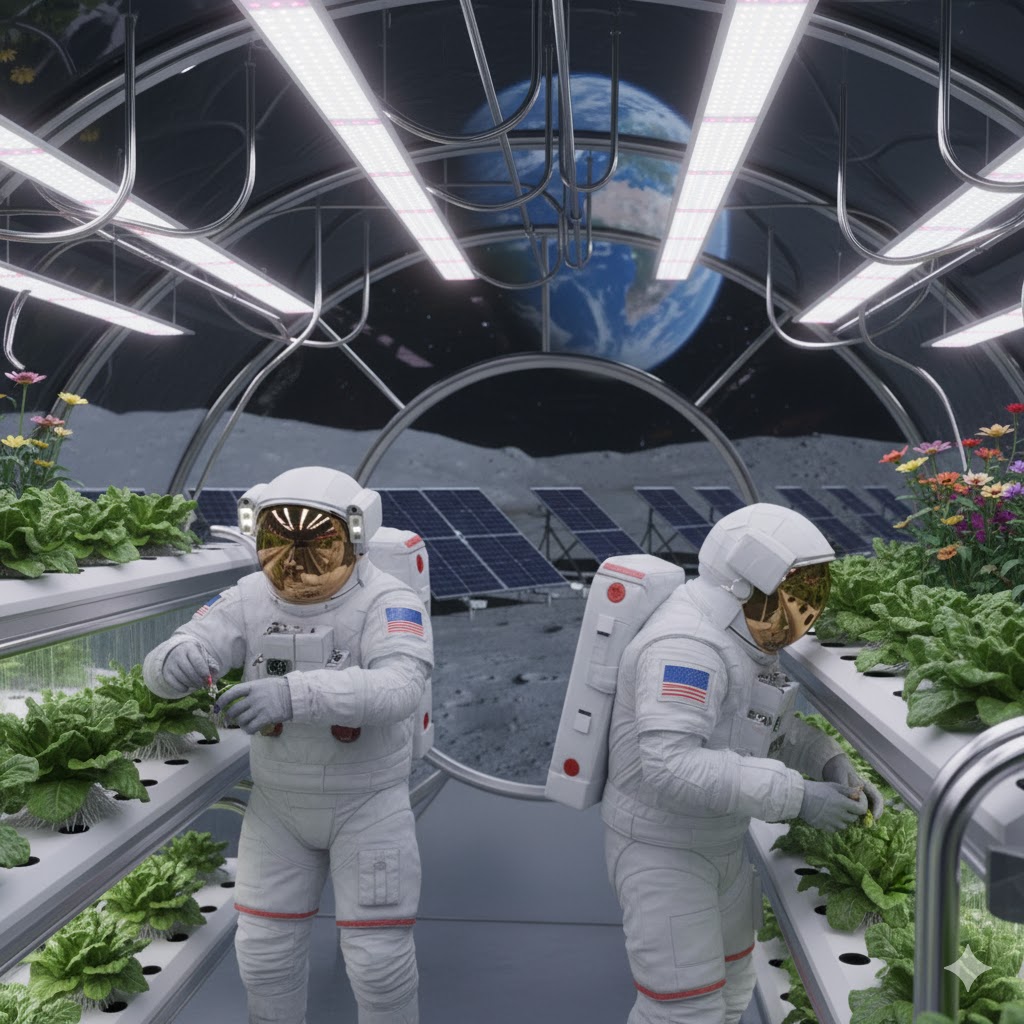
4. Inside the Lunar Garden Tour Experience
A lunar biosphere tourism package might include:
- A guided walk through multiple bio-domes showcasing different ecosystems (tropical, temperate, and desert)
- Educational workshops on space farming and sustainability
- Opportunities to join “Planting for Humanity” programs — symbolic seed ceremonies connecting Earth and Moon agriculture
Imagine sitting in a Moon café where every salad leaf was grown 384,000 km away from Earth — truly farm-to-table beyond the sky.
Must See: Like the immersive culinary adventures in Zero-Gravity Dining: The Future of Space Food Tourism.
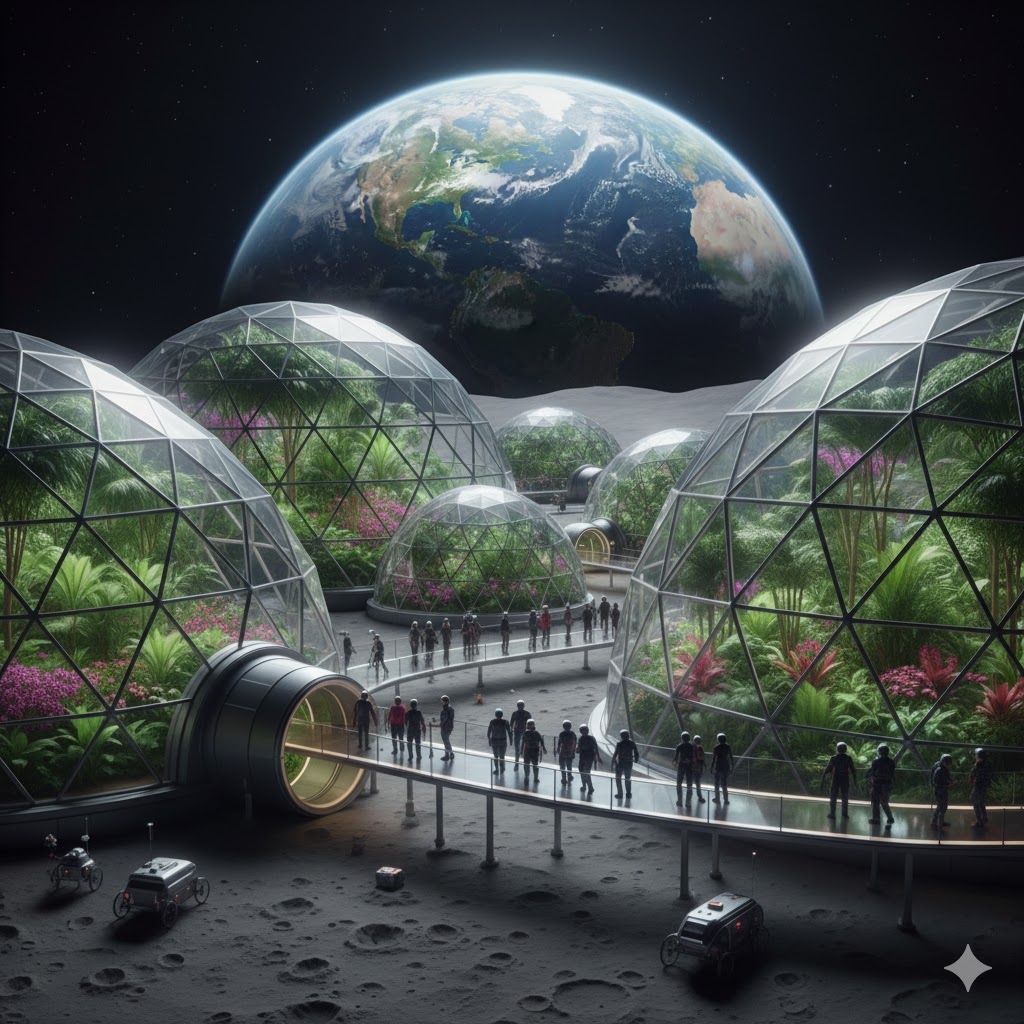
5. Environmental Design and Sustainability
Every element of the Moon Garden is designed with closed-loop efficiency:
- Condensed vapor turns into irrigation water.
- Carbon dioxide from human breath feeds the plants.
- Solar energy powers light and temperature control.
Even plant waste is recycled into compost and oxygen regeneration systems.
These biospheres aren’t just gardens — they’re models for future life on Mars and deep space.
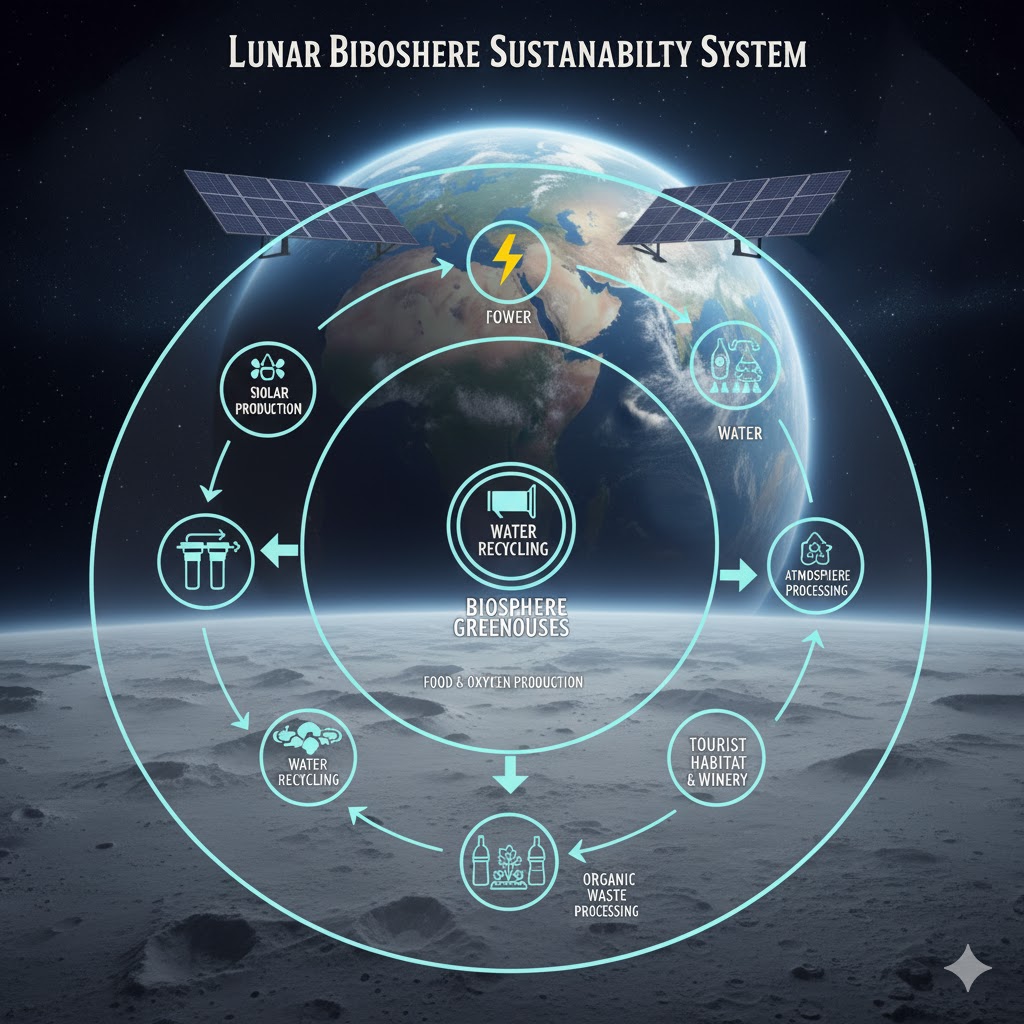
6. The Cultural Impact: Art, Zen, and Mindfulness in Space
The Moon Garden will be more than an experiment — it’ll be a sanctuary.
Tourists can join “lunar meditation sessions” among green leaves under artificial sunlight, reconnecting with life in an otherwise lifeless world.
Artists, poets, and scientists envision the biosphere as a spiritual retreat, symbolizing humanity’s effort to nurture beauty even in desolation.
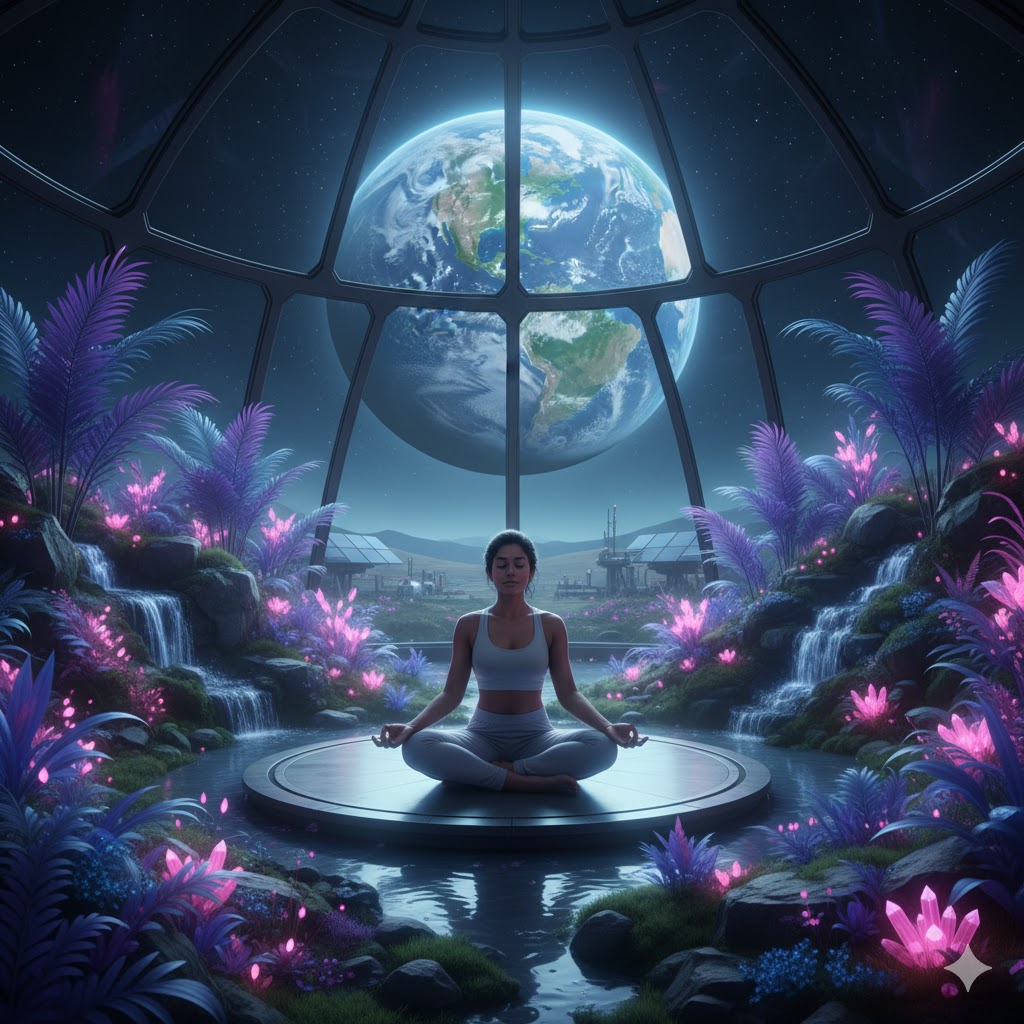
7. Economic & Educational Benefits
The first lunar biospheres could become multi-billion-dollar tourism and research hubs, attracting:
- Scientists studying space ecology
- Students and eco-travelers
- Investors supporting green tech in space
Partnerships between NASA, ESA, and private space firms could lead to lunar “green hotels,” merging sustainability and tourism in one breathtaking experience.
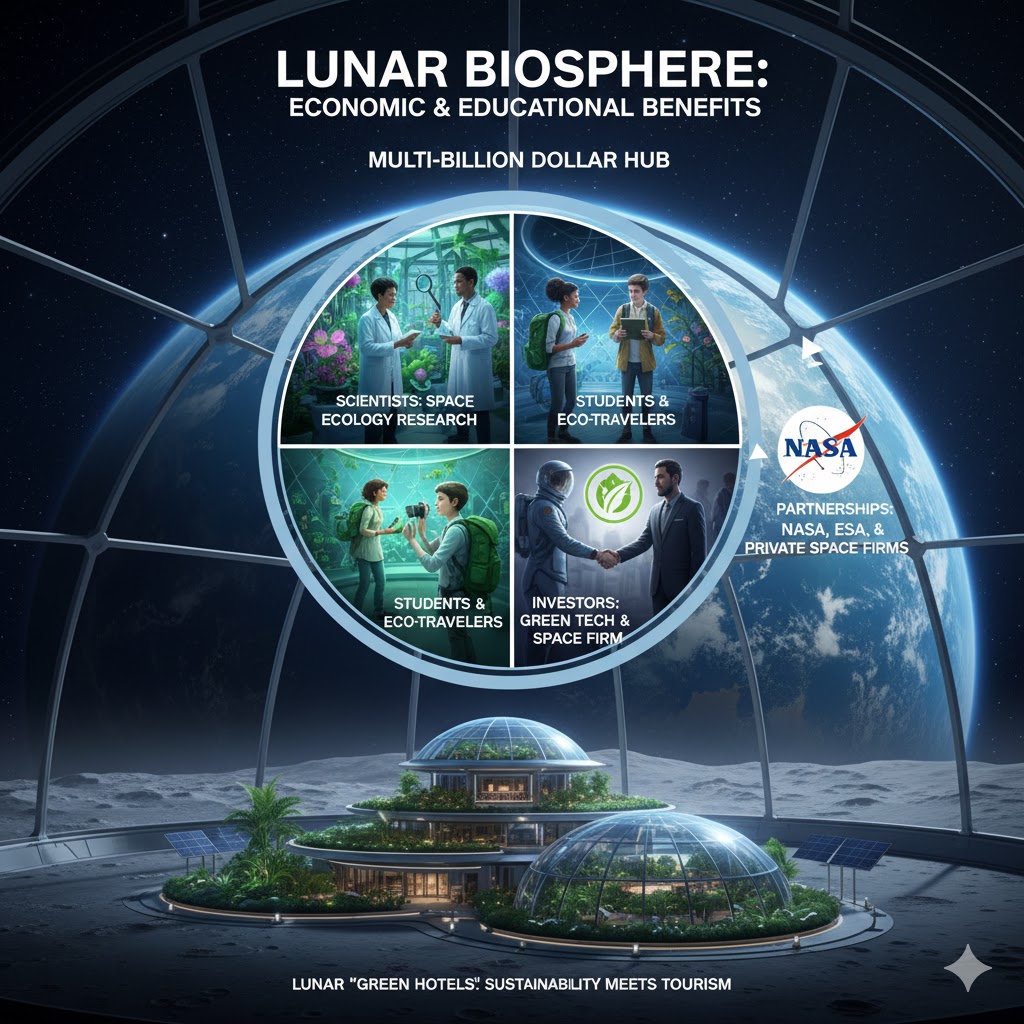
8. Challenges and the Future Ahead
Challenges remain:
- Radiation shielding for long-term habitation
- Maintaining genetic diversity of plants
- Psychological effects of isolation
But each solution paves the way for more ambitious ecosystems — from moon gardens to Martian forests.
In 50 years, humanity’s greatest tourist attraction might not be a monument — but a thriving biosphere glowing on the lunar horizon.
Traveler Review:
Lunar biosphere tourism redefines eco-travel.
It’s not about escaping Earth — it’s about bringing Earth with us.
These Moon gardens will remind future generations that wherever humans go, life follows.
Under the silver skies of the Moon, the first flowers grown beyond Earth will symbolize not just survival — but hope.
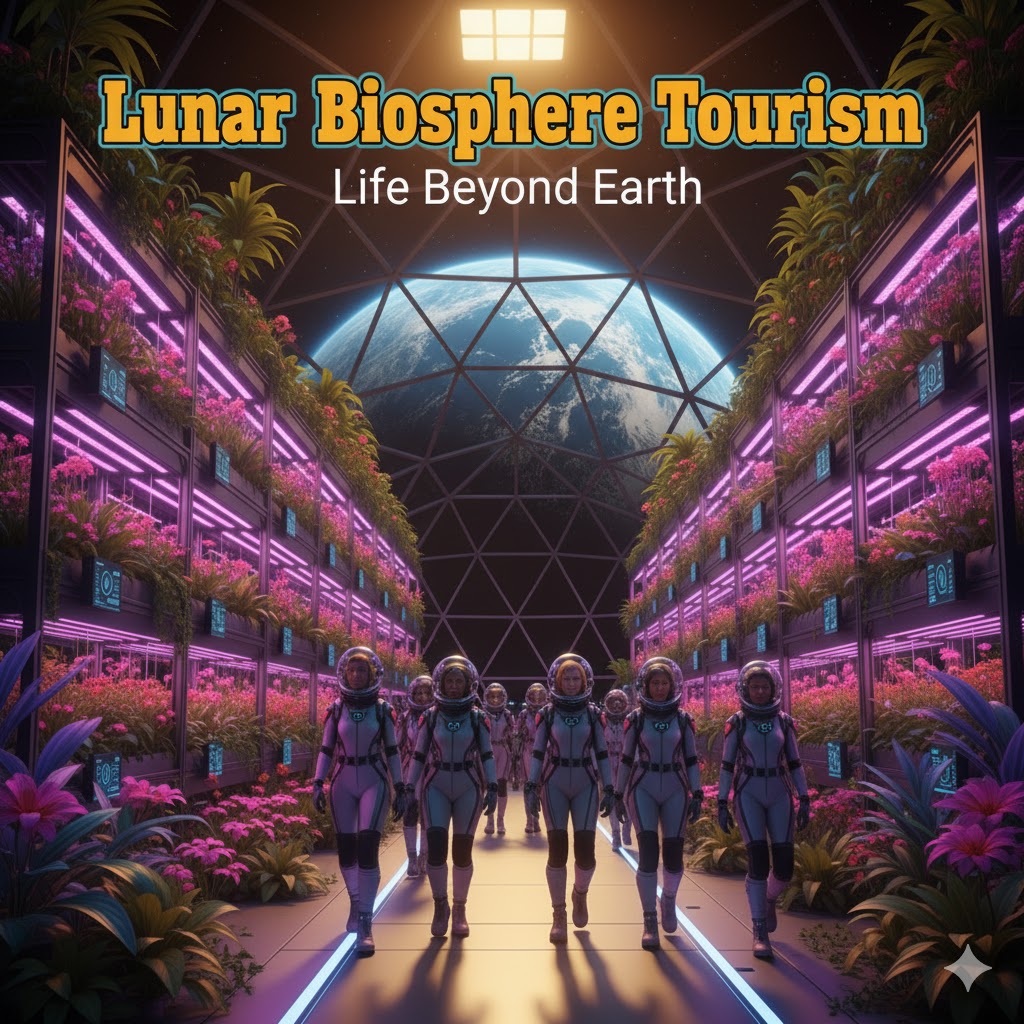
FAQs
Q1: What is lunar biosphere tourism?
It’s a form of space tourism where visitors explore self-sustaining gardens and habitats built on the Moon.
Q2: How do plants grow in low gravity?
Through hydroponics, artificial light, and AI-controlled nutrient systems that mimic Earth conditions.
Q3: When will lunar biospheres be built?
Experimental greenhouses could appear by 2030, with tourism access possible by 2040.
Q4: Who’s leading the research?
ESA, NASA, and JAXA are all developing sustainable plant systems for Moon bases.
Q5: Why are lunar gardens important?
They provide food, oxygen, and psychological comfort for long-term space habitats.

